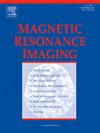Accelerating prostate rs-EPI DWI with deep learning: Halving scan time, enhancing image quality, and validating in vivo
IF 2
4区 医学
Q2 RADIOLOGY, NUCLEAR MEDICINE & MEDICAL IMAGING
引用次数: 0
Abstract
Objectives
This study aims to evaluate the feasibility and effectiveness of deep learning-based super-resolution techniques to reduce scan time while preserving image quality in high-resolution prostate diffusion-weighted imaging (DWI) with readout-segmented echo-planar imaging (rs-EPI).
Methods
We retrospectively and prospectively analyzed prostate rs-EPI DWI data, employing deep learning super-resolution models, particularly the Multi-Scale Self-Similarity Network (MSSNet), to reconstruct low-resolution images into high-resolution images. Performance metrics such as structural similarity index (SSIM), Peak signal-to-noise ratio (PSNR), and normalized root mean squared error (NRMSE) were used to compare reconstructed images against the high-resolution ground truth (HRGT). Additionally, we evaluated the apparent diffusion coefficient (ADC) values and signal-to-noise ratio (SNR) across different models.
Results
The MSSNet model demonstrated superior performance in image reconstruction, achieving maximum SSIM values of 0.9798, and significant improvements in PSNR and NRMSE compared to other models. The deep learning approach reduced the rs-EPI DWI scan time by 54.4 % while maintaining image quality comparable to HRGT. Pearson correlation analysis revealed a strong correlation between ADC values from deep learning-reconstructed images and the ground truth, with differences remaining within 5 %. Furthermore, all models showed significant SNR enhancement, with MSSNet performing best across most cases.
Conclusions
Deep learning-based super-resolution techniques, particularly MSSNet, effectively reduce scan time and enhance image quality in prostate rs-EPI DWI, making them promising tools for clinical applications.
利用深度学习加速前列腺rs-EPI DWI:将扫描时间减半,提高图像质量,并在体内验证
本研究旨在评估基于深度学习的超分辨率技术在高分辨率前列腺弥散加权成像(DWI)和读数分割回声平面成像(rs-EPI)中减少扫描时间并保持图像质量的可行性和有效性。方法回顾性和前瞻性分析前列腺rs-EPI DWI数据,采用深度学习超分辨率模型,特别是多尺度自相似网络(MSSNet),将低分辨率图像重构为高分辨率图像。使用结构相似指数(SSIM)、峰值信噪比(PSNR)和归一化均方根误差(NRMSE)等性能指标将重建图像与高分辨率地面真值(HRGT)进行比较。此外,我们评估了不同模型的表观扩散系数(ADC)值和信噪比(SNR)。结果MSSNet模型在图像重建方面表现出优异的性能,最大SSIM值为0.9798,PSNR和NRMSE均较其他模型有显著提高。深度学习方法将rs-EPI DWI扫描时间缩短了54.4%,同时保持了与HRGT相当的图像质量。Pearson相关分析显示,深度学习重建图像的ADC值与地面真实值之间存在很强的相关性,差异在5%以内。此外,所有模型都显示出显著的信噪比增强,其中MSSNet在大多数情况下表现最佳。结论基于深度学习的超分辨率技术,尤其是MSSNet,能够有效缩短前列腺rs-EPI DWI扫描时间,提高图像质量,具有较好的临床应用前景。
本文章由计算机程序翻译,如有差异,请以英文原文为准。
求助全文
约1分钟内获得全文
求助全文
来源期刊

Magnetic resonance imaging
医学-核医学
CiteScore
4.70
自引率
4.00%
发文量
194
审稿时长
83 days
期刊介绍:
Magnetic Resonance Imaging (MRI) is the first international multidisciplinary journal encompassing physical, life, and clinical science investigations as they relate to the development and use of magnetic resonance imaging. MRI is dedicated to both basic research, technological innovation and applications, providing a single forum for communication among radiologists, physicists, chemists, biochemists, biologists, engineers, internists, pathologists, physiologists, computer scientists, and mathematicians.
 求助内容:
求助内容: 应助结果提醒方式:
应助结果提醒方式:


